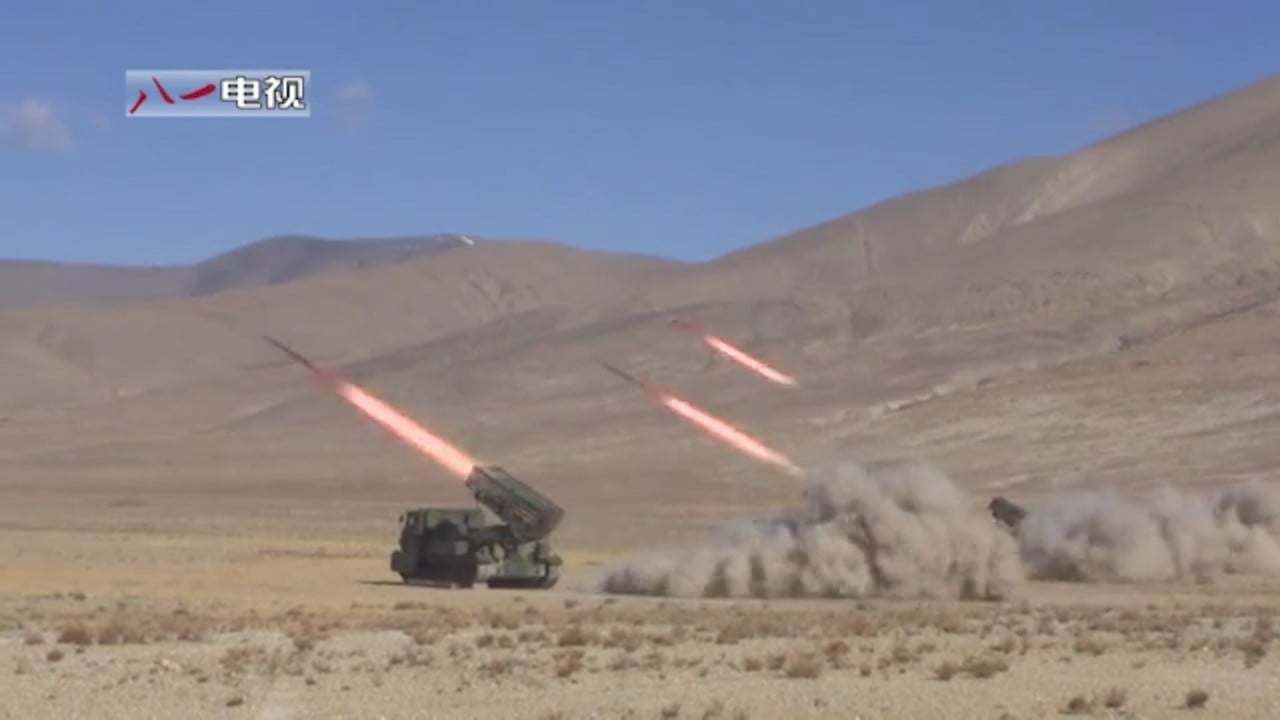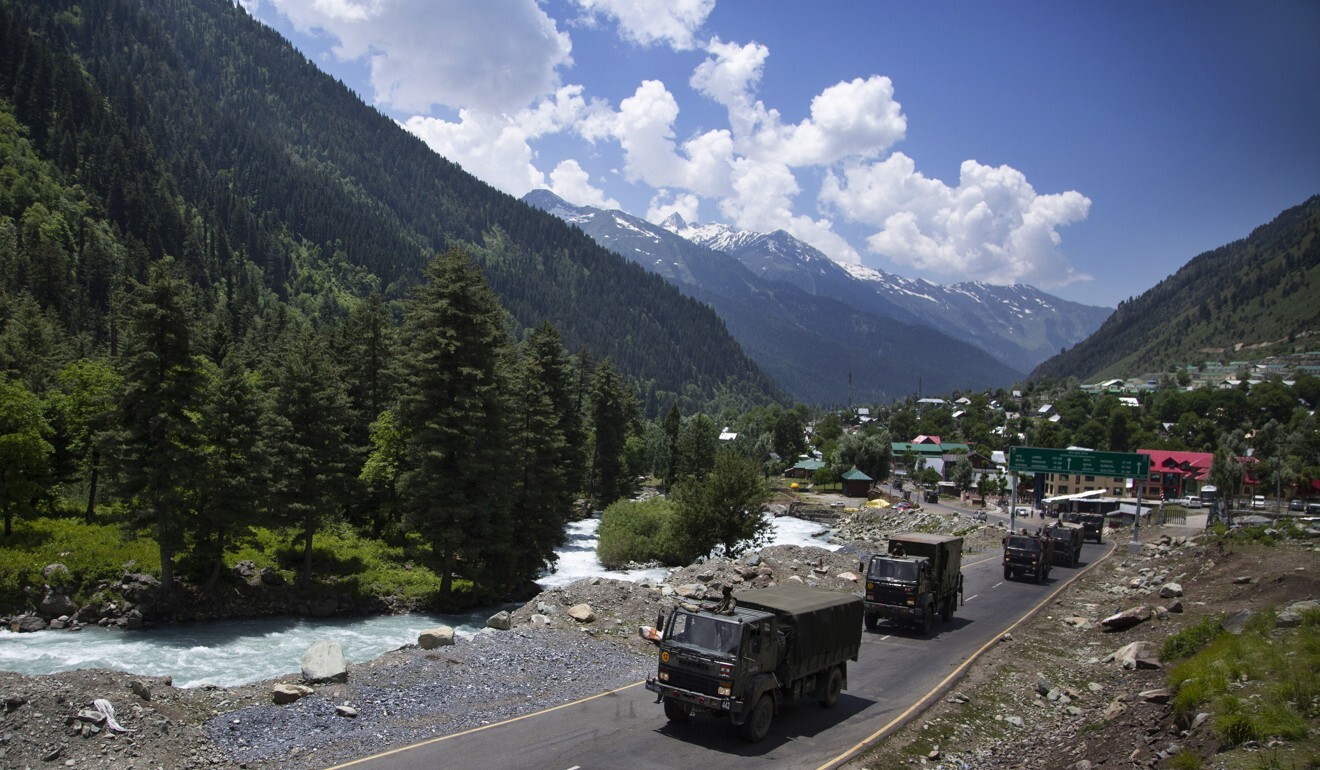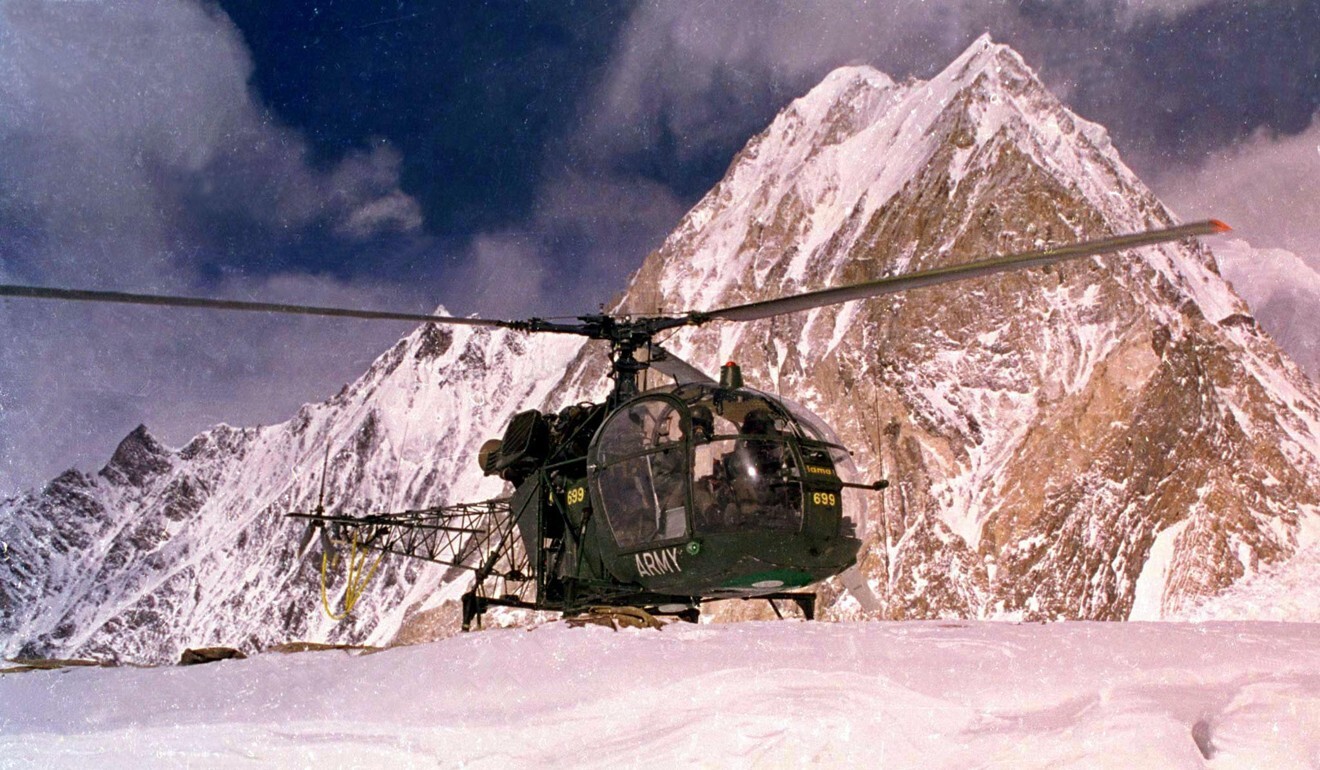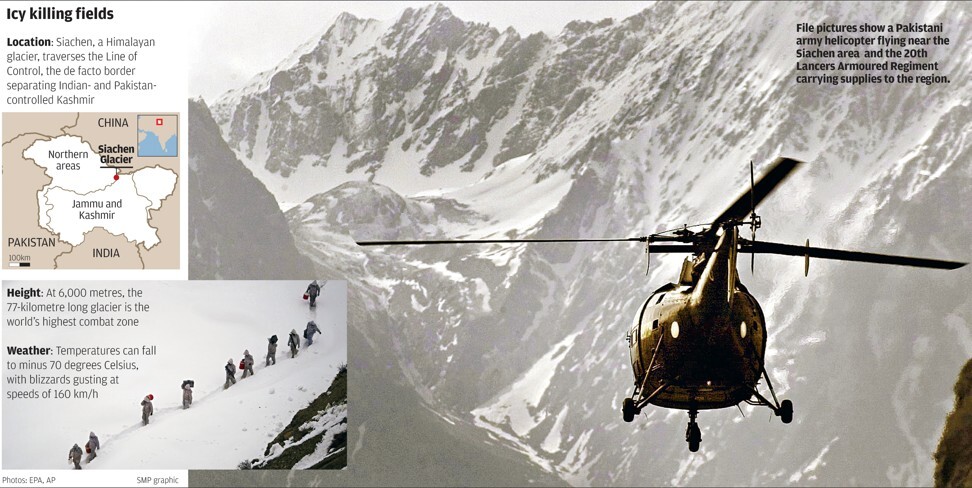
China-India border dispute: is Pakistan about to enter the fray?
- The military stand-off in the Himalayas has raised the prospect of a clash between three nuclear-armed powers, experts say
- The dispute goes beyond Kashmir’s borders. At stake are water resources on which 270 million people depend

01:15
Indian air force aircraft fly near disputed border with China
With China re-entering the Kashmir fray for the first time since it defeated India in a 1962 border war, experts believe it is only a matter of time before there is another conflagration – possibly even a two-front affair involving all three nuclear-armed claimants to Kashmir.
India-Japan naval exercises: a message for China?
The LOC and LAC are separated by the Karakoram Pass, immediately to the west of the Galwan Valley. On the other side of the pass lies the Siachen Glacier, an undefined point at the northernmost point of the LOC. It became notorious as the world’s highest battleground after its seizure by India in 1984 sparked 20 years of fighting with Pakistan.
Pakistan retaliated in 1999 by launching a failed attempt to gain control of the strategic Kargil heights overlooking India’s only overland supply route to Siachen.

01:55
Chinese exercise in Tibet after border clash with India
China’s seizure of territory previously held by India in Ladakh has achieved a similar objective.
“We can’t divorce the Ladakh crisis from the Kashmir dispute. So long as the LAC is tense – and it’s likely to be tense for the foreseeable future – the LOC is bound to get hotter,” said Michael Kugelman, senior South Asia associate at the Wilson Centre, a Washington-based think tank.
However, there has been no sign of any military collusion by China and Pakistan against India in Kashmir, according to Rabia Akhtar, director of the Centre for Security, Strategy and Policy Research at the University of Lahore.
“In theory, India might have prepared for a two-front war, but there is no evidence to suggest that Pakistan and China are preparing for it or that interoperability exists or is planned to fight such a war with India,” said Akhtar, who is also a member of Pakistani Prime Minister Imran Khan’s advisory council on foreign affairs.
Addressing a video conference last week, retired Major General Athar Abbas, a former chief military spokesman, said Pakistan had no interest in joining forces with China to fight a two-front war against India because a conflict between the three nuclear weapons states “would not remain confined to them”, and would likely escalate into a wider war involving the US and other powers.
The Stockholm International Peace Research Institute (Sipri), in its yearbook published on June 15, said China, India and Pakistan were steadily modernising their strategic arsenals in response to threats posed by their bigger rivals.

It said the Himalayan neighbours were working towards achieving second-strike capability, last achieved by the US and Soviet Union during the 1960s at around the time China was conducting its first nuclear test detonations.
India’s first nuclear tests took place in 1974, prompting Pakistan to launch its programme. Helped by transfers of technology from China, Pakistan crossed the nuclear threshold in 1989, according to Washington’s evaluation, and subsequently exchanged tit-for-tat test detonations with India in 1998.
“China is in the middle of a significant modernisation of its nuclear arsenal. It is developing a so-called nuclear triad for the first time, made up of new land- and sea-based missiles and nuclear-capable aircraft,” Sipri said.
“India and Pakistan are slowly increasing the size and diversity of their nuclear forces,” it noted.
Sipri estimates that China has 320 nuclear warheads, while Pakistan has 160 and India, 150.
“The reality of a volatile, nuclear-armed triad of India, Pakistan and China is nothing to sneeze at, and especially when it is embroiled in a major flashpoint like Kashmir,” the Wilson Centre’s Kugelman said.
ICY PATCH
The disputed Himalayan territory also houses the glaciers that feed the River Indus and its tributaries, providing water for the world’s biggest irrigation system on which 270 million people in India and Pakistan depend.
Meanwhile, population growth in India and Pakistan will increase both demand and competition for the increasingly scarce shared natural resource.
Can India afford an economic battle with China?
“Himalayan water resources will be a key factor in the coming years as growing demand and dwindling supply will make it a potent reason [for conflict],” said the London-based analyst Harsh Pant, who is also head of the strategic studies programme at the Observer Research Foundation in New Delhi.
The World Bank-mediated 1960 Indus Waters Treaty (IWT), which stipulates how India and Pakistan manage their shared water resource, was already “under growing pressure from both sides, which believe it is unfair and outdated”, Kugelman said.
In response to India building a dam on the River Jhelum, a tributary allocated to Pakistan under the IWT which acts as the LOC boundary in western Kashmir, Islamabad has reasserted its water rights with Beijing’s help.

In June, Pakistan awarded contracts for three major hydropower projects on the River Jhelum – which India calls the Kishanganga – to Chinese state-owned corporations. Another Beijing-owned firm leads the joint venture given the job in May of building Pakistan’s third major dam on the Indus on the periphery of the disputed Gilgit-Baltistan region, which provides the only overland link with China.
Akhtar of the University of Lahore said India’s decision last August to annex the part of disputed Kashmir it administers could be a preamble to its withdrawal from the IWT.
“If tomorrow, India backs out, it will be detrimental for Pakistan and for that Pakistan needs to strategise today. So there is a real potential for conflict with respect to competition for resources, change of treaty status, and constructions of dams on both sides,” she said.
Driving India into US arms is a risk China is willing to take
China’s sudden assertion of its role as the most potent military power in Kashmir would ensure tensions in South Asia continued to escalate in years to come, the experts said.
“This is not just a short-term scenario. With India bogged down on its northern border with China, and with the India-China relationship entering an extended cold period, Pakistan will have a strong incentive to increase pressure on India’s western border by ramping up cross-border firing and perhaps even encouraging Kashmiri militants to stage attacks on Indian security forces,” Kugelman said.

Likewise, Islamabad believes New Delhi has ordered the intensification of its covert war on Pakistani soil, waged by supporting militant separatists in Balochistan and Sindh provinces.
Responsibility for the attack was claimed by the Baloch Liberation Army, which carried out a similar assault on the Chinese consulate in Karachi in November 2018.
Rather than being constrained by its stand-off with China in Ladakh, Pakistan expects India to again test its red lines by launching further cross-border attacks in response to a future major Kashmiri separatist attack on its military, as it did in February 2019.
“There is immense potential for India to find new avenues to test Pakistan’s resolve, perhaps next time in other mainland areas in Pakistan,” Akhtar said.
The die would be cast by India’s response to China’s aggression in Ladakh, the experts said.
“China’s recent actions against India might make India a more robust supporter of a strong Quad,” said Pant, referring to the US-led Quadrilateral Alliance including Australia, Japan and India, which Washington is seeking to grow into an anti-Beijing bulwark in the Indo-Pacific.
However, Akhtar believed India would be “ever more cautious about shifting towards the US and others, so as not to visibly distress the Chinese or be seen as building an anti-China alliance”.
But if India does take a momentous decision to join the new cold war as a US ally, it would make the India-Pakistan relationship “even tenser”, Kugelman said.
“And that in itself will ensure, at the least, that Pakistan will continue to produce tactical nuclear weapons,” he said. ■


